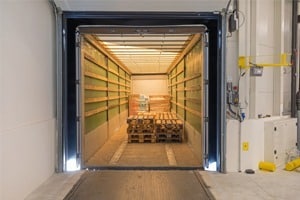The concept of full loads: we explain what counts
With countless terms that are often further linked to practical fields of application, it is not for nothing that logistics is such a complex field. So many things make sense and have their reasoning, and it is often the small but subtle differences that count.
This also applies to freight transport. Full loads are an important concept here, which is ideal for many freight goods and offers many advantages.
Definition of full loads: avoid mix-ups and ship goods efficiently
The term “full load” is a generic way of describing what this is all about. These are complete loads for which it is crucial that they are not altered on the way to the intended destination. This means that there is no mixing with other transported goods, for example at transshipment points, and that the transported goods are not split up.
In practice, the full loads can then also occur in different order forms. On the one hand, there are the individual orders, which classically mean the complete load from A to B in a single order. However, automated processes in which further partial orders are released after the initial order are also conceivable. For example, it could happen that the load automatically initiates the next process after arrival.
The full load in contrast to the partial load
In logistics, full loads are often seen in contrast to partial loads, and for good reason. For example, the definition of a partial load is that different goods can be mixed and collected. With standardized transport sizes, for example, this can lead to an even more optimized use of available space.
The decisive factor here is that other steps are necessary in terms of transport logistics for partial loads and, for example, the complexity increases somewhat, which in turn speaks in favor of full loads.
Note: Partial loads as opposed to full loads can also be referred to as groupage traffic.
Different means of transport offer differences in full loads
Due to the wide range of transport standardizations, it is also necessary to take a look at the means of transport, as there are certain differences here for full loads. The most important distinctions are shown below:
- Full Truck Loads (FTL) are complete loads on trucks that are used in traditional truck transportation. Partial loads are not uncommon here in particular, although full loads can offer logistical advantages, especially if the right capacities are selected and subsequently filled.
- Full Container Loads (FCL) are complete loads in container transport. Here, too, it is crucial that the capacities are filled appropriately. It is therefore particularly important during the planning stage to adapt the full load to the available quantities.
Furthermore, there is also a term for complete loads for rail transport with wagonloads, as the goods often transported on trains allow exactly that. For example, these include bulk materials that would be unsuitable for mixing. Optimized full loads are also worthwhile by rail, especially on transport routes where suppliers and recipients have the appropriate logistical options for loading and unloading.
